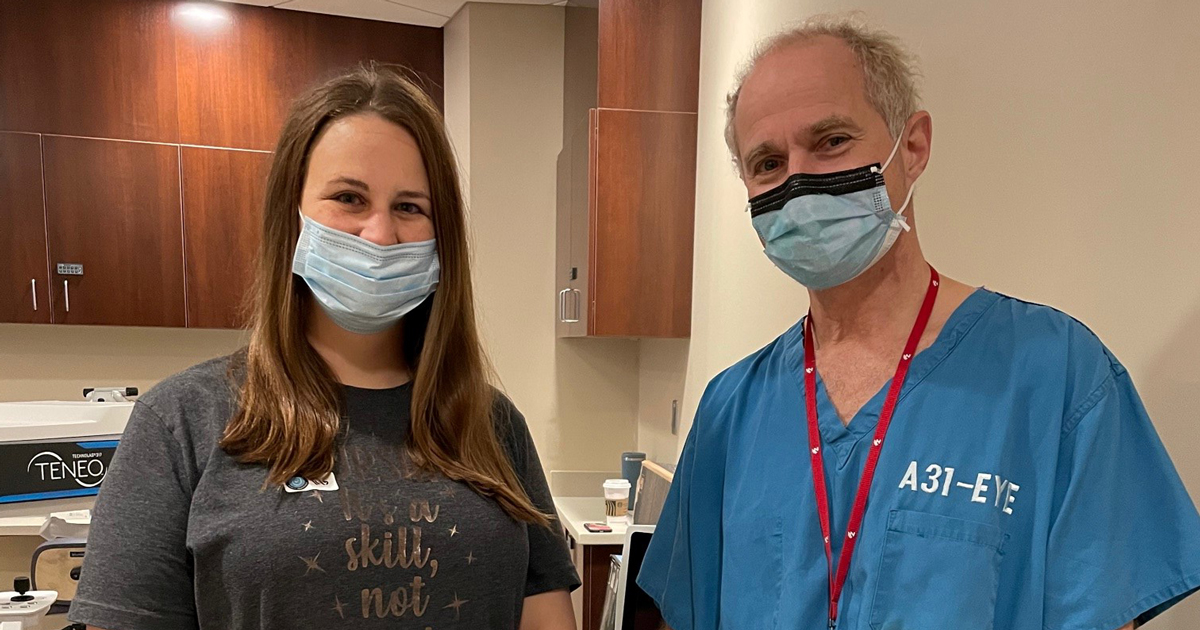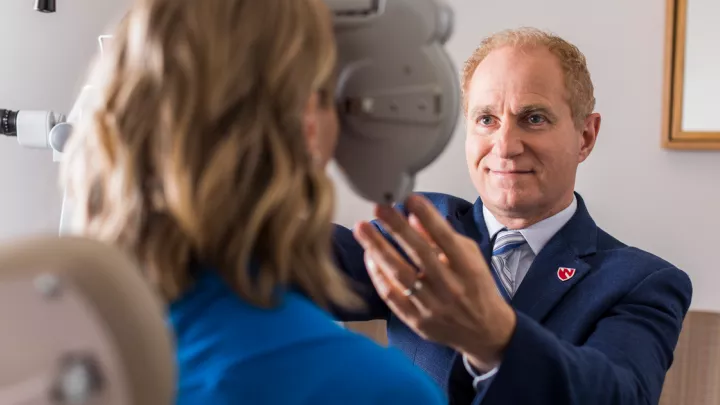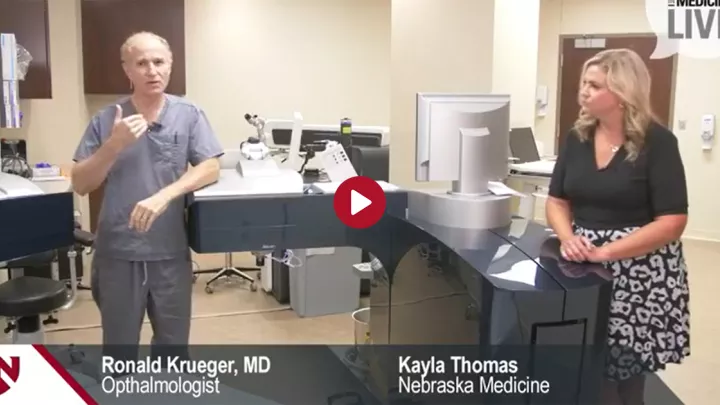New procedure saves patient’s sight

Free radicals are usually a bad thing. Free radicals have been implicated as the bad guys in everything from too much sunlight to smoking. They're charged particles desperately looking for a free electron and will steal or share electrons from neighboring compounds. This reactivity and linking up usually causes issues in the body. But in corneal crosslinking, this linking is a good thing – saving a patient's eyes from surgery.
Keratoconus is a disease where a person's corneas get thinner and thinner over time, leading to blindness. Bethany Marksmeier found out she had keratoconus two years ago after coming in with vision problems. Eye surgeon Ron Krueger, MD, says, "It's important to screen potential laser vision candidates because they may have vision problems due to a misshaped cornea or too thin of a cornea. The correct treatment depends on the right diagnosis."
In this case, corneal crosslinking was the right treatment. Corneal crosslinking is a new FDA-approved procedure that strengthens the cornea, treating keratoconus. A honey-like solution of vitamin B2 (riboflavin) and ultraviolet (UVA) light applied to the eyes saves the patient's cornea – and their sight. It stops the progression of keratoconus and, in some cases, causes mild regression of the steepening effect of keratoconus, too.
"Corneal crosslinking is an early intervention to help people with keratoconus," says Dr. Krueger. "It helps their vision before it's compromised."
Marksmeier was the first patient to receive corneal crosslinking at Truhlsen Eye Institute at Nebraska Medicine.
Corneal crosslinking requires three ingredients:
- Riboflavin drops
- Ultraviolet (UVA) light
- Oxygen
The procedure takes an hour per eye. First, the eyes are given numbing drops so the patient doesn't experience pain or discomfort. The central 9 mm of the corneal epithelium is first removed from the eye to maximize the penetration of the riboflavin drops into the underlying corneal protein. Every two minutes for 30 minutes, an ophthalmologist applies the riboflavin drops, first without UVA light and then another 30 minutes with UVA light to facilitate crosslinking between corneal fibers. Under the UVA light, the patient's eyes glow alien green.
One month later, Marksmeier is feeling good and doesn't have any issues. She says, "I'd definitely recommend Dr. Krueger and his team to others. Everyone was very thorough during the procedure and let me know what was happening each step of the way."
The less costly and less invasive alternative
Corneal crosslinking is much less invasive than the alternative treatment to keratoconus – corneal transplants. A corneal transplant requires an eye surgeon to cut out the affected tissue and replace it with a donor's cornea. There's a chance of failure, and the surgery takes a while to recover from.
The corneal crosslinking procedure is less expensive and less invasive than corneal transplants – making it a valuable new option for people with keratoconus.






